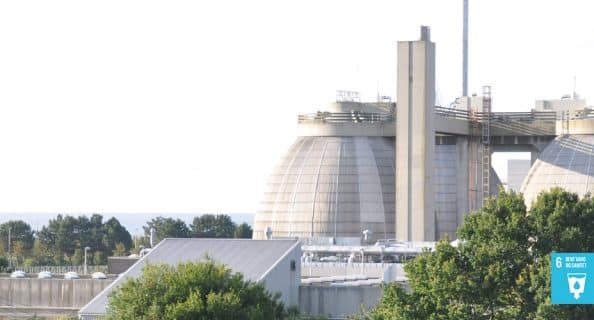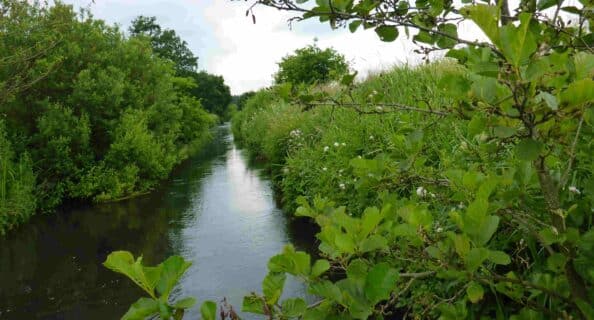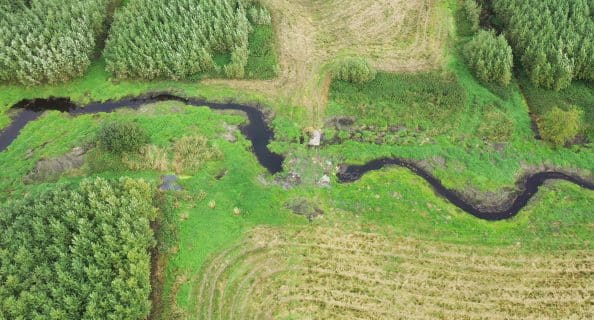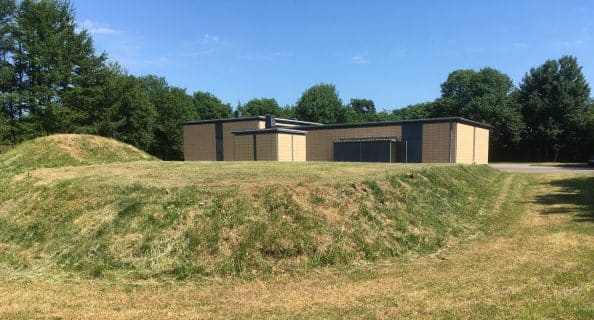Sludge dewatering is done by continuously pumping slurry and sludge from production into an equalization basin where it settles. After collection and settling from about two days of operation, the clear fraction is pumped to the lagoon system. Agitation is then started in the equalization basin to obtain a uniform sludge fraction before the settled fraction is pumped onto a Geotube.
When it comes to dewatering slurry from trout farms, owner and CEO Knud Kongsted says that they have “achieved a very satisfactory dewatering with a sludge product of approx. 12% dry matter (DM).”
The demand for energy-rich biomass is increasing as more new biogas plants are springing up in Denmark. There is therefore ample opportunity for disposal of the energy-rich sludge product to, for example, a local biogas plant.
Low operating costs and efficient sludge dewatering
Operating costs are limited to the investment in the Geotube itself. In addition, precipitation chemical and polymer are consumed to bind phosphorus in the sludge and to achieve the right structure in the sludge flocs. According to Knud Kongsted, he uses about 3-4 kg. active polymer per tonne of dry matter and adds:
“Analyses of nutrients in the reject water show 98% retention of suspended matter and almost 90% reduction of phosphorus and 75% reduction of total nitrogen, which is bound in the sludge. In addition, the load on the recipient is significantly reduced, as the biological oxygen demand (BI5) is reduced by 87% by dewatering in Geotubes. This reduction of nutrients is effective, even when compared to other dewatering techniques such as belt filters.”
Experience has shown that the sludge receiver (biogas plant) can better handle the sludge when it is only dewatered to about 10-12%, as it is then still pumpable. In addition, this is a better fit in terms of the desired dry matter content of the sludge when used for digestion in the digester of the biogas plant.
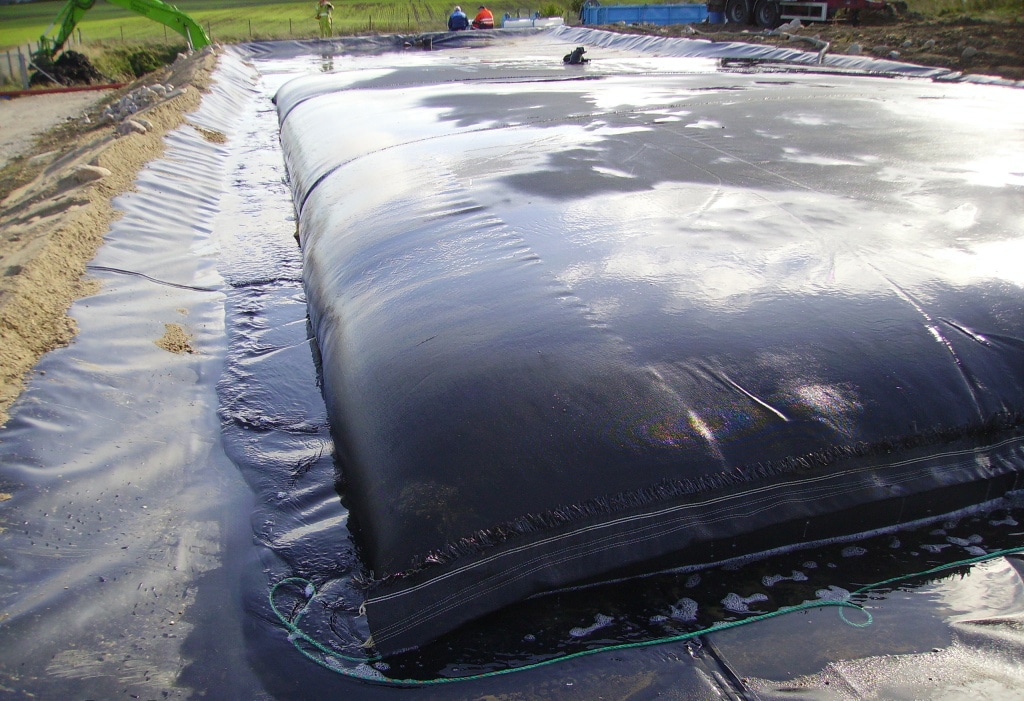
Geotube can be reused
Knud Kongsted has used Geotubes for dewatering slurry from trout production for several years and has also reused his Geotubes for several years, further reducing the cost of sludge dewatering at the fish farm. The idea to reuse the Geotube was created when Knud had problems getting rid of the sludge. So he came up with the idea of emptying the Geotube and disposing of the sludge in smaller portions.
In order to use the Geotube multiple times, it has been necessary to cut an extra hole in the bag. This is to allow the vacuum cleaner to suck out the dewatered sludge. The experiment of reusing the Geotube and cutting a hole has proven to work without the sludge coming out of the hole in the middle of the bag when the Geotube is filled. Knud says that the dewatering is almost as effective as when the bag was new.
The same two Geotubes have been reused at Kongeåens Dambrug for 3 years
When reusing the Geotube, the capacity of the sack is reduced as the material becomes soft over time. Operators wash the bag regularly to remove deposits on the material.
The current Geotubes at Kongeåens fish farms have been reused more than 5-6 times, which furthermore has given a very good operating economy for the use of Geotube for dewatering of sludge from fish farms.
Want to know more about Solmax Geotube®?
You are always welcome to contact us for more information.
